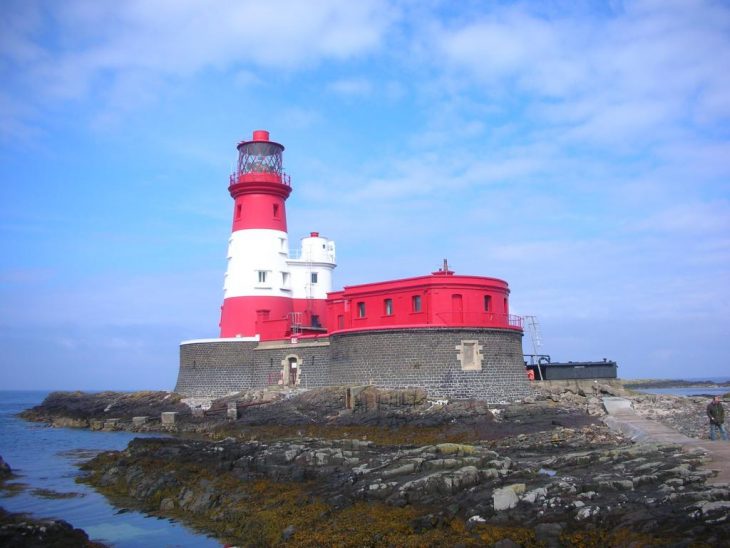Request M0UKI/p EU-109 Qsl Card by clicking HERE
Charles M0OXO, Dave EI9FBB, Richard G7GLW & Nobby G0VJG will be qrv from EU-109 (Farne Islands) on the 6th and 7th September 2014. Callsign issue awaited but probably be M0UKI/p. This short operation may also include participation in the SSB Field Day contest. The team are aiming for Longstone Island, dependant on weather, (keep an eye on QRZ.com links for updates). They will be using multi-band Dipoles & vertical antennas and hope to give this IOTA to as many chasers as possible in the short time frame. Qsl will be via M0OXO OQRS Direct/Bureau.
The Farne Islands are a group of islands off the coast of Northumberland, England. There are between 15 and 20 islands depending on the state of the tide.[1] They are scattered about 1½–4¾ miles (2.5–7.5 km) from the mainland, divided into two groups, the Inner Group and the Outer Group. The main islands in the Inner Group are Inner Farne, Knoxes Reef and the East and West Wideopens (all joined together on very low tides) and (somewhat separated) the Megstone; the main islands in the Outer Group are Staple Island, the Brownsman, North and South Wamses, Big Harcar and the Longstone. The two groups are separated by Staple Sound. The highest point, on Inner Farne, is 62 feet (19 metres) above mean sea level.
The Longstone Lighthouse, or Outer Farne as it was first called, is situated on Longstone Rock, one of the Outer Staple Islands. A light was requested for these islands by Sir John Clayton in the late 17th century and by Captain J. Blackett in 1755. Unfortunately both were rejected as the Elder Brethren of Trinity House were unable to obtain the consent of the affected parties to pay a toll for the maintenance of the light.
However, in 1826 it was found essential for the welfare of shipping off the Northumberland coast to construct a lighthouse in the Farne Group on the Longstone Rock, which lies about 6 miles from the mainland on the westernmost side of the reef. Vegetation was very scanty being predominantly matgrass.
The Lighthouse, designed and built by Joseph Nelson is a red and white circular tower built of rough stone with iron railings around the lantern gallery. The light originally came from the Argand lamps with 12 burners, parabolic reflectors 21 inches in diameter and 9 inches deep and a catadioptric optical apparatus. The cost of the Lighthouse and the dwellings was approximately £4,771, the lantern alone costing £1,441.
The island was a bleak situation to endure and the isolation must have been terrible, often storms were so bad as to drive the family into the upper rooms of the tower to seek refuge, the waves being so enormous that they covered the living quarters.
Longstone Lighthouse is most famous as the scene of the Forfarshire wreck and the exploits of Grace Darling, a daughter of the keeper in charge. In September 1838 the steamer Forfarshire, bound from Hull to Dundee, went aground on Hawkers Rocks, about a mile from the Lighthouse, when 43 people were drowned; the stern portion of the vessel being split off and carried away in the storm. The forepart, to which clung the survivors, remained fast on the rocks. At daybreak William Darling, the keeper, and the fishermen ashore saw the wreck, but the waves were beating against the rocks so much that the fishermen thought it impossible to attempt a rescue and even Darling hesitated. He was finally persuaded to make the attempt by his daughter, with her as the second hand in the small lighthouse boat. On reaching the wreck after a terrific struggle they brought back 4 men and 1 woman in their frail open boat and later a further four survivors; all 9 had to be accommodated and fed at the lighthouse for 2 days until the storm abated and they could be taken to the mainland. This gallant action made Grace Darling and her father famous. The Royal Human Society voted them its gold medal, the Government made them a grant and a public subscription was organised.

